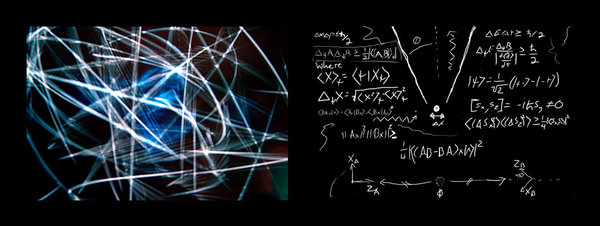
![]()
Coupled Oscillations
[SPS Shortcourse]

Lecture-8:
This lecture concludes our short course on coupled oscillations.
We give as examples Raman spectroscopy.
We will leave addressing the 6-12 (Lennard-Jones) potential, and the dispersion relations of phonons, for some future session, in sha'a Allah.
The presentation is posted here.
Oh.. don't forget my scribbles: 1, 2, 3, 4, 5
Relevant Web-sites:
http://www.falstad.com/coupled/
Mathematica Codes:
Four masses on a rim connected by springs
Comments:
We have not discussed enough the transverse modes of vibration in the CO2 molecule. This is discussed in textbooks. Clearly, from symmetry, there is degeneracy in 'the' two orthogonal direction [which could be taken as 'any' two orthogonal directions to the longitudinal direction]. The general motion in the transverse directions is that of Lissajous figures. Depending on initial conditions, this could be motion in one dimension (i.e. if the amplitude of the other direction is zero) or two dimensions with the same frequency (due to degeneracy). If the phase is p/2, the motion will be circular. Otherwise, it is generally elliptic.
For Raman spectroscopy, I suggest you read this material: Raman Scattering Theory, Classical Theory of Rayleigh and Raman Scattering, Fundamentals of Raman Spectroscopy.
Also, for the issue of polarizability changes due to different vibrations modes, for CO2 click here, and for H2O click here.
back to the main (Coupled Oscillations) page
last up-dated: Rabi-II, 1433
